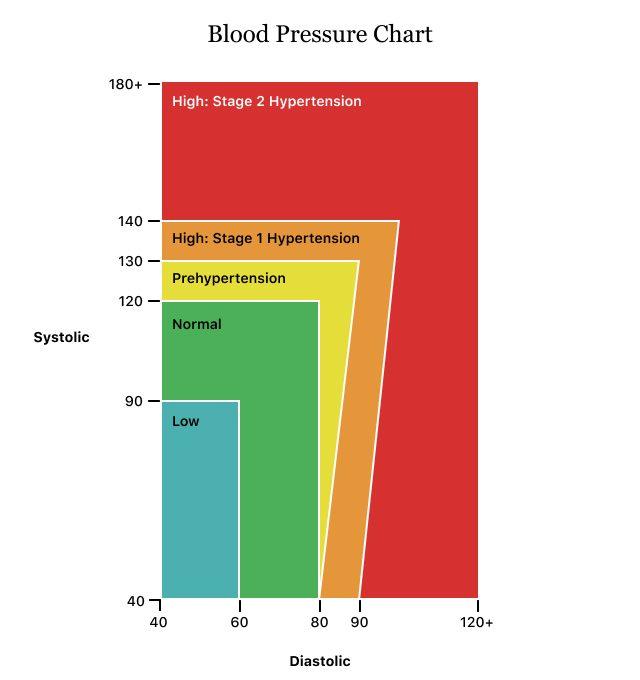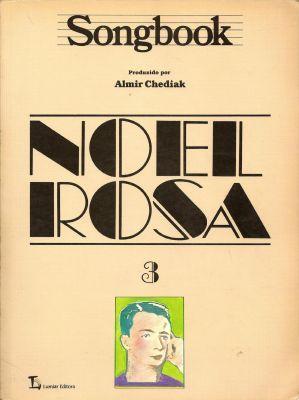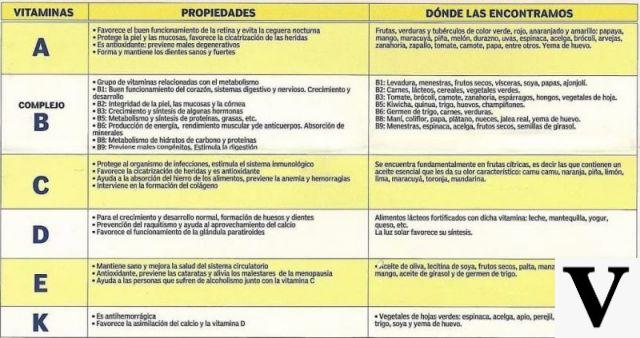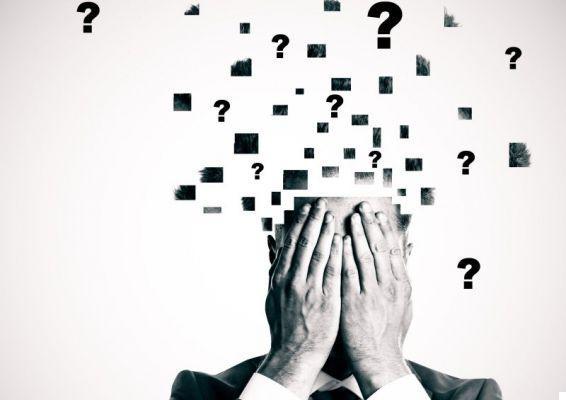
generality
La low minimum pressure it is the medical condition in which the diastolic pressure value is constantly below 60 mmHg.
Generally, the low minimum pressure falls within a context of hypotension, therefore in a state in which the systolic pressure is also constantly below normal (therefore at 90 mmHg).
Brief review of the concept of blood pressure and low blood pressure
La blood pressure it is the force that the blood exerts against the walls of the blood vessels, as a result of the pumping action carried out by the heart.
Measured in millimeters of mercury (mmHg) and in the resting state, blood pressure is usually defined through the values of systolic pressure e diastolic pressure:
- systolic blood pressure (or Max pressure or "maxim”) Is the blood pressure when the heart contracts
- diastolic blood pressure (or minimum pressure or "minima”) Is the blood pressure when the heart is in the relaxation phase.
In a healthy individual, resting blood pressure can have systolic pressure values between 90 and 120 mmHg and diastolic pressure values between 60 and 80 mmHg.
According to the medical-scientific community, the optimal blood pressure at rest it is equal to or slightly less than 120 (p. systolic) / 80 (p. diastolic) mmHg.
The permanent drop in blood pressure below 90/60 mmHg sets the stage for talking about a medical condition known as hypotension o low pressure.
For further information: The best blood pressure monitor: the most efficient models
What is low minimum pressure?
La low minimum pressure it is the condition in which the diastolic pressure is constantly lower than the value of 60 mmHg, that is the pressure level for the "minimum" that marks the boundary between the state of normal pressure and the state of hypotension.
In other words, with the terminology "low minimum blood pressure" doctors refer to a state whose peculiarity is a resting diastolic pressure below 60 mmHg.
As a rule, the low minimum pressure falls within a context of hypotension, therefore in a state in which the systolic pressure is also constantly below normal (therefore at 90 mmHg).
Causes
A low minimum pressure can be the result of:
- An in-depth constitutional hypotension. Doctors call constitutional hypotension the mild hypotensive state which, in carriers, is something physiological. There are, in fact, individuals who have constantly low blood pressure levels, almost never suffering from it (there is no symptomatology), as for them it is pure normality.
For some, constitutional hypotension is a condition with no apparent causes (ie they have always had low blood pressure and the reason cannot be identified); for someone else, constitutional hypotension is a recurring condition in one's family, so it presumably has a genetic-hereditary basis; for someone else, finally, it is the result of regular and high-level sporting practice.
Based on reliable (and surprising) scientific studies, constitutional hypotension would be something positive for the health of the person who carries it, so much so that doctors define the aforementioned hypotensive state with the term benign. - An in-depth pathological hypotension. By pathological hypotension, doctors mean a hypotensive state, more or less severe, which depends on the presence of a disease or medical condition. Unlike constitutional hypotension, pathological hypotension causes symptoms, the severity of which very often depends on the extent of the pressure drop.
Diseases and medical conditions potentially responsible for pathological hypotension include: Addison's disease, anemia due to folate or vitamin B12 deficiency, episodes of anaphylactic shock, dehydration, myocardial infarction, heart failure congestive, some forms of arrhythmia, bradycardia, valvulopathies, pulmonary embolism, septic shock, acidosis, severe brain trauma and spinal cord injuries. - An in-depth drug hypotension (iatrogenic hypotension). By drug hypotension, experts mean all those hypotensive states, more or less severe, which result from the constant, and sometimes incorrect, intake of certain drugs.
Drugs that can cause hypotension include: calcium channel blockers, trinitrine (or nitroglycerin), angiotensin II receptor antagonists, alpha blockers, anesthetics used for spinal anesthesia, diuretics, beta -blockers, narcotics, tricyclic antidepressants, levodopa combined with carbidopa and some erectile dysfunction drugs (ex: Viagra, Levitra or Cialis) in combination with nitroglyerin.
It is interesting and curious to point out to readers that some of the aforementioned drugs (calcium channel blockers, diuretics, angiotensin II receptor antagonists and beta-blockers) are specifically indicated for the treatment of hypertension, i.e. the opposite condition to hypotension. A reduction in blood pressure levels due to the use of an antihypertensive drug - that is, one designed to act against high blood pressure - can indicate two things: either the dosage prescribed by the doctor was too high or the patient has taken a drug dose greater than that expected. - An in-depth hypotension from pregnancy. Pregnancy is typically accompanied by a decrease in blood pressure, both in maximum and minimum values, due to the important peripheral vasodilation induced by progesterone (a sex hormone essential for the proper development of fetal growth).
Normally, in the first 24 weeks of gestation, there is an average drop in systolic pressure equal to about 5-10 mmHg, and an average decrease in diastolic pressure greater than 10 mmHg.
Symptoms and complications
The presence of a low minimum pressure and the hypotensive state of which the latter is a part can be asymptomatic - i.e. symptom-free - or symptomatic, that is responsible for a certain symptomatological picture.
In general, the lack of symptoms in spite of a low minimum pressure and a hypotensive state is typical - as has been anticipated in part - of cases of constitutional hypotension, while the presence of a certain symptomatology is a peculiarity of cases of pathological hypotension. , drug induced hypotension and pregnancy hypotension.
What are the symptoms of low blood pressure?
The typical symptom picture when low blood pressure is part of a symptomatic hypotensive state includes:
- Vertigo, dizziness and confusion;
- Blurred vision
- Feeling of fainting which sometimes results in actual fainting (syncope);
- Nausea and vomit;
- Problems with concentration;
- Sense of instability;
- Palpitations.
Complications
When the minimum low pressure falls within a context of severe hypotension (for example following a serious illness), the organs of the person concerned no longer receive the amount of blood that allows them to remain healthy and function at their best.
If the appropriate treatments are lacking, this inadequate blood supply and the consequent suffering that the organism undergoes can cause the patient to go into a state of shock.
Characterized by paleness, a weak and rapid pulse, fast and shallow breathing, and cold sweats, shock, in the absence of emergency (therefore immediate) therapy, can be fatal.
OTHER COMPLICATIONS
The fainting episodes to which an individual with symptomatic low blood pressure is prone may result fall injuries and trauma. In fact, it is not uncommon for people who are fainting from low blood pressure to suffer fractures of the limbs or brain trauma.
Why does low blood pressure cause symptoms?
A low pressure in the maximum and minimum values becomes symptomatic when the effects it produces on the blood circulation are responsible for brain suffering.
Therefore, it is based on the degree of brain suffering that the symptoms can be more or less severe. In fact, mild brain suffering causes mild disturbances, such as dizziness when getting up quickly from a lying position; on the contrary, severe brain suffering causes important manifestations, such as syncope (or fainting).
Speaking of syncope, this event is a real defense mechanism that the body implements in order to protect itself from the negative effects of an excessive drop in blood pressure. In fact, the lying position that follows the fainting means that the blood encounters less difficulty in its path and reaches the heart and brain more easily.
Diagnosis
The minimum low blood pressure, and the hypotensive state of which it is part, are easily diagnosed through the simple measurement of blood pressure, by means of sphygmomanometer.
However, an accurate diagnosis of low blood pressure (and hypotension) cannot be limited to the simple observation of low blood pressure levels at rest, but must also focus on the research of the triggering causes and on the characteristics of the problem in progress. This explains why doctors, when faced with a case of hypotension, subject the patient to an accurate physical examination and to a precise one anamnesi, sometimes even prescribing:
- Blood tests;
- Urine tests;
- Un electrocardiogram, for an echocardiogram it's a stress test;
- L'pressure holter;
- Radiological examinations, such as chest CT scan or chest X-ray;
- The so-called passive orthostatic stimulation test;
Why research the causes of low minimum blood pressure?
Identifying the underlying conditions of low blood pressure is important because it allows for the most appropriate therapy planning.
Low minimum pressure: the best meters on the market to detect it
Monitoring blood pressure is of fundamental importance, especially in subjects at risk of fluctuations. For several years, i pressure gauges portable, which you can keep on hand and ready to use in case a measurement is needed. Here are some of the products most appreciated by Amazon users, among those that can be purchased on the e-commerce portal.
Among blood pressure monitors, it is particularly successful on Amazon OMRON X2 Basic, which offers an oscillometric method of blood pressure measurement with the support of a cuff, which allows you to check your blood pressure from the comfort of your home. Easy to use, it allows monitoring of blood pressure at home with reliable, accurate results and with the detection of irregular heartbeats. For accurate home monitoring, X2 Basic measures blood pressure by detecting blood movement in the brachial artery thanks to the 22-32cm cuff.
Sanitas SBM 21 is an upper arm blood pressure monitor that classifies the results with a colored scale, detects the heart rhythm and warns in case of possible arrhythmia. It is equipped with a large LCD display with date and time, automatic stop device. This product is particularly appreciated for its cost-effectiveness: it is intended for arm circumferences of 22 - 36 cm and comes with a practical carrying case.
Il HOMIEE blood pressure monitor has a 5 "backlit LCD sphygmomanometer, which offers a clear display of all measured values on a large screen, including date and time display, which is particularly easy to read for the elderly. Up to 180 readings can be recorded: the cuff size is 22-42cm, suitable for different arm circumferences. Two power options: Comes with 4 AAA batteries, which can be powered via the Type-C interface, although the charging cable is not included If no operation is performed, the machine will automatically turn off after three minutes.
Therapy
When low blood pressure lacks associated symptoms and, from diagnostic tests performed, appears to be part of a constitutional hypotensive state, no specific care or treatment is generally required. As stated, in fact, constitutional hypotension does not constitute a danger to the health of the person who carries it.
The speech changes considerably when the minimum low blood pressure and the hypotensive state of which it is part are symptomatic and depend on a very specific cause. In such circumstances, in fact, the current condition requires specific therapy against the triggering factor (causal therapy).
Useful remedies against symptomatic constitutional low blood pressure
Sometimes, even the low minimum blood pressure resulting from constitutional hypotension can be the cause of a certain symptom picture; however, in these situations, it would be better to talk about annoyances rather than symptoms.
According to doctors, the best advice against such ailments are:
- Increase the water and salt intake (then drink a few more glasses of water and slightly increase the amount of salt in the diet);
- Avoid excessive consumption of alcohol;
- Avoid caffeine (especially in the evening and before bedtime);
- Wear elastic compression stockings (as they promote venous return from the lower limbs to the heart);
- Avoid eating too large meals;
- Get used to slowly moving from lying to standing position.
It should be noted that the possibility of a symptomatology associated with a low minimum blood pressure, in a context of constitutional hypotension, is more frequent in summer months - therefore when it is hot - as the high temperature is a factor favoring the lowering of blood pressure (therefore, in a person already hypothesized by nature, the heat is responsible for a further reduction in blood pressure levels).
Examples of causal therapy in symptomatic cases of low minimal blood pressure
When the minimum low blood pressure depends on a specific trigger, which can be a disease, a particular health condition or the intake of a certain drug, the treatment of this trigger (when possible) allows the values to be brought back to normal. pressors or, at least, bring them closer to normal limits.
Examples of causal therapy are:
- The treatment, through a specific diet, of the deficiency of vitamin B12, in people with hypotension due to a reduced intake of the aforementioned vitamin;
- The abundant administration of liquids (mainly water), in the presence of hypotension from dehydration;
- Temporary interruption or change of dosage of a certain antihypertensive drug therapy, in the presence of hypotension due to the incorrect use of a drug against hypertension;
- Immediate treatment of anaphylactic shock, when hypotension is the result of a severe allergic reaction.
Prognosis
If the cause is treatable and treatments are appropriate and timely, the low blood pressure and hypotensive state on which it depends are largely controllable.
Clinically, low blood pressure is a less serious condition than the opposite, high blood pressure.


























